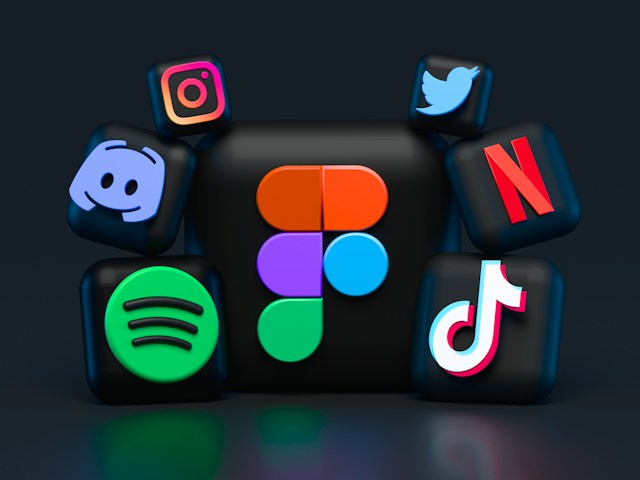What is the Oldest Music Platform? Tracing the Roots of Our Digital Grooves
In the vibrant tapestry of human history, music has been a constant thread, weaving its way through the fabric of every culture. Yet, the means through which we’ve been graced by the melodious wares of talented musicians have shifted dramatically over the centuries. Today, we find ourselves amidst an explosion of music platforms, each vying for our auditory attention. But where did it all begin? Which platform, arguably older than the others, set the stage for the sonic marvels we experience today?
Dive into this article as we illuminate the evolution of music distribution, from the crackling radio broadcasts and vinyl records of yesteryear to the digital domains of today, where streaming services reign supreme. Let’s unearth the seeds of modern music platforms and explore the impact they’ve had on our shared musical journey.
Early Generation Streaming Music Platforms: The Pioneers
In the age of the internet, streaming music services are as common as the air we breathe. But as the digital dawn broke, a few services emerged, laying the groundwork for the streaming behemoths we know today.
RealNetworks’ RealAudio and RealPlayer
One of the first to recognize the potential of the internet for music streaming was RealNetworks. They launched RealAudio in 1995, a groundbreaking technology that allowed the streaming of audio over the internet, paving the way for a form of digital radio. A few years later, they followed up with RealPlayer, which expanded their capabilities to include video.
LAUNCH Media—a pioneer in the personalization of web radio
In 1999, LAUNCH Media, Inc. went beyond simple radio streaming and offered users personalized, ad-free web radio tailored to their musical tastes. This concept, which is now a staple feature of most streaming services, made LAUNCH Media a standout in the early streaming industry.
Spinner.com—the indie haven
Operating from 1997 to 2013, Spinner.com was an independent music website that focused on providing free streaming of radio channels customized to specific genres. This platform played a critical role in the democratization of music streaming, offering smaller, independent artists a space beside more prominent names.
Different Types of Music Platforms Through the Ages
The landscape of music platforms has been as diverse as the genres they support. Here’s how the early generations of music platforms shaped our consumption habits.
The Rise of Radio: Broadcasting the Beat
The invention of the radio in the late 19th century was a seismic shift that democratized music distribution. Radio waves could carry sound through the air, enabling listeners to tune in to news, sports, and most importantly, music. The impact of radio on popular culture is immeasurable, setting the scene for music’s global reach.
Vinyl Records: The Golden Age of Hi-Fi
Vinyl records held dominion over the music industry for most of the 20th century. With the creation of the LP (long-playing) and the 45, vinyl allowed consumers to own, collect, and engage with music in unprecedented ways. The tactile pleasure of handling records and the rich sound quality are elements still cherished by audiophiles today.
Cassettes and CDs: Music on the Move
The 1970s saw the introduction of cassettes and the 1980s heralded the rise of CDs. Both formats brought increased portability and durability, revolutionizing music consumption. The ability to create mixtapes and personal collections on cassettes, and the promise of greater sound quality and skip-free playback on CDs, endeared these formats to millions.
Digital Music Platforms: The Advent of Convenience
As the digital age progressed, music platforms adapted. From the controversial days of Napster to the sophisticated streaming services of today, the convenience of digital music has always been a primary driving factor.
MP3s and the Sharing Pioneers
The development of the MP3 format in the 1990s heralded a new era for how we acquired and shared music. Napster, founded in 1999, was an early peer-to-peer file sharing service that allowed users to swap MP3s, revolutionizing the market while drawing the ire of the music industry.
Streaming Services and Online Platforms: The Reign of Accessibility
In the mid-2000s, the paradigm shifted again with the introduction of streaming services like Spotify, Apple Music, and Tidal. These platforms offered instant, on-demand access to a vast library of music with the added ability to share, create playlists, and discover new tunes.
In the world of digital music, the thread continues to unfurl, with new platforms and technologies constantly emerging. Each iteration builds upon the last, inching us closer to the pinnacle of accessibility and audio fidelity.
Conclusion: The Beat Goes on
The story of music platforms is the story of human ingenuity, passion, and the desire to connect. From the earliest radio broadcasts that carried the strains of distant lands, to the vinyl records that brought the concert hall into the living room, and the streaming services that allow us to curate our own personal soundtrack, music platforms have evolved to match our ever-changing needs and desires.
As consumers and creators of music content, it’s essential to take a moment to appreciate the journey. The platforms of the past are not relics but the foundation upon which we stand, propelling us forward into an age where music is both more abundant and more accessible than ever before.
So, next time you press play on your favorite streaming service, take a moment to nod in appreciation for the path that led to this point— the path that’s uniting music fans across the globe and shaping the sounds of the future.


